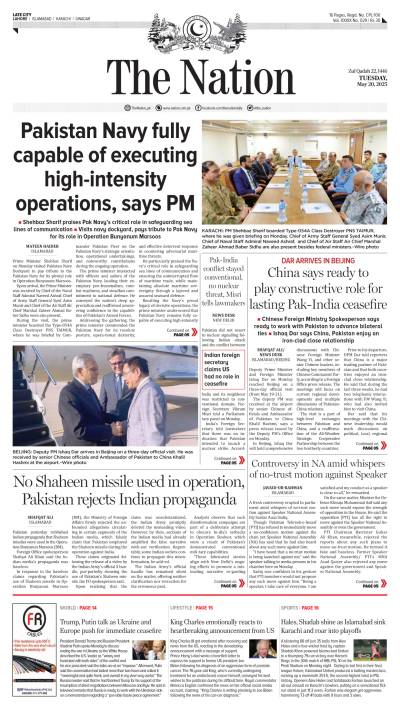LAHORE - Easter (also known as “Resurrection Sunday”) is a time of joy and celebration for Christians around the world. In Pakistan, Christians face several challenges. But despite these challenges, they continue to uphold their religious traditions. Hope is what keeps the community alive. And hope is the theme of Easter. At Easter, we continue to affirm the power of life over death, and the triumph of love over hate. In Pakistan, inter-faith harmony is essential in promoting peace and stability. And the Christian community’s celebration of their holy days in the face of persecution and discrimination by some segments of society is a testament to their resilience and determination to live in peace. The first followers of Jesus went to seek him at dawn on the first Easter. And today, local Christians assemble in and outside their churches at sunrise to celebrate this special day. The rising of the sun then becomes symbolic of their hope.
As Faiz said:
“dil nā-umīd to nahīñ nākām hī to hai,
lambī hai ġham kī shaam magar shaam hī to hai”
The earliest Easter narrative in the Bible tells of some women leaving the empty grave of Jesus in fear and trembling (Gospel of Mark 16:8). And according to scholars, this is where the text officially ends. The theological implications are apparent: perhaps the oldest story of Easter speaks of the fear of Christ’s followers. And while the later Easter traditions are longer, more elaborate, and vivid, they don’t lose this element. They talk about how Jesus’ early followers had locked their doors because of the fear of the people, and that they visited the tomb of Jesus “while it was still dark” (Gospel of John 20:1, 19, 26). For Pakistani Christians, these texts come alive in this season, especially after the tragic incident at Lahore’s Gulshan-e-Iqbal Park in Easter 2016. Not to imply, of course, that Christians are the only victims of terror attacks in this country. Nevertheless, similar Easter attacks have occurred in other countries as well (Sri Lanka 2019, Egypt 2017). According to the New Testament, Jesus was crucified by the Roman Empire. He was a victim of political terror and religious zeal. But God raised him from the dead, a symbol of divine justice prevailing over violence and injustice. “Crucifixion meant that imperial power had won,” says John Dominic Crossan, a prominent scholar of early Christianity. “Resurrection meant that divine justice had won. God is on the side of the crucified one.” Of course, the claims of the death and resurrection of Jesus divide the Muslim and Christian communities. But what we miss in the disagreements is the social and political implications of these faith traditions. Is it any different from, let’s say, the traditions of Karbala in Islam where the elements of fear, violence, and death (paradoxically) give hope to millions of people today? The message is the same: God is on the side of the marginalized. And as long as the State of Pakistan protects and upholds the rights of minorities, it will find God on its side. This Easter, we pray that God shines his light on this country so we can overcome fear, hate, and violence.





